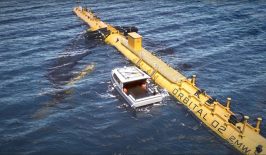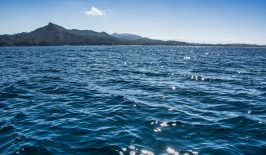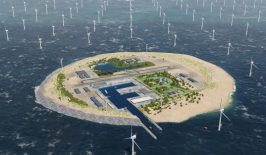There’s another way to generate power from our oceans – and a team at the University of Edinburgh, working with researchers in Italy, have shown encouraging results from initial work.
Both wave and tidal energy harvesting remain incredibly important methods for generating renewable energy from sources that don’t stop at night or need wind to work.
But it’s not an easy goal to crack – working devices need to be reliable, cheap to install, and withstand tremendous energy from passing storms. None of these objectives go hand-in-hand with our oceans. That’s led to interesting innovations being tested – such as underwater planes with turbines from Minestro, and a huge tidal turbine floating on top of the water.
Engineers believe a new kind of generator, called a Dielectric Elastomer Generator or DEG, could graduate from the lab, and “could be used in fleets of low-cost, easily maintained structures at sea within decades”.
The concept of a DEG is not new, but converting a concept into a reliable device is never simple. The device is enclosed in a vertical tube, with the top of the tube housing a highly-flexible membrane. A cleverly-designed water inlet allows the wave action to rush water into the tube, driving trapped air to inflate the membrane at the top, creating pressure. This visible ballooning of the rubber membrane generates a voltage, which can be harnessed to generate power.
You can see it in action in this video.
Effectively, this eliminates the need to drive turbines and other moving parts, which require regular and expensive maintenace even in near-shore applications.
The University of Edinburgh’s 25 metre-diameter FloWave tank facility was used to simulate an ocean environment, with encouraging results published in Proceedings of the Royal Society.
The team believe that a single device, produced at scale, could generate 500 kilowatts of electricity – about enough to power 100 homes – and would appear to pose very low-risk to marine life or habitats given that it does not move once placed in the sea.
Professor David Ingram, of the University of Edinburgh’s School of Engineering, who took part in the study, said: ‘Wave energy is a potentially valuable resource around Scotland’s coastline and developing systems that harness this could play a valuable role in producing clean energy for future generations.’
Will it work?
It’s a long way from the lab to supplying the grid with power, but it’s encouraging.
The biggest question, as the detailed study discusses, is the requirement of a long-lasting, high-quality and defect-free membrane standing up to constant wave action. The device will need to last many thousands of daily actuations given the unrelenting waves, and even the most durable material eventually wears out under stress. It may be more a matter of how cheaply the membranes can be replaced, or if special materials can supply a long-lasting device. Very large waves during storms may cause problems as well, but the solution could prove superior to corrosion-sensitive devices that are also being variously tested across the UK and globally. In some ways, it is similar to the Bombora wave generator, using waves to drive airflow, but the implementation is very different.
In any case, it’s another promising option in the fight to replace fossil fuel energy sources with greener, cleaner renewables.






